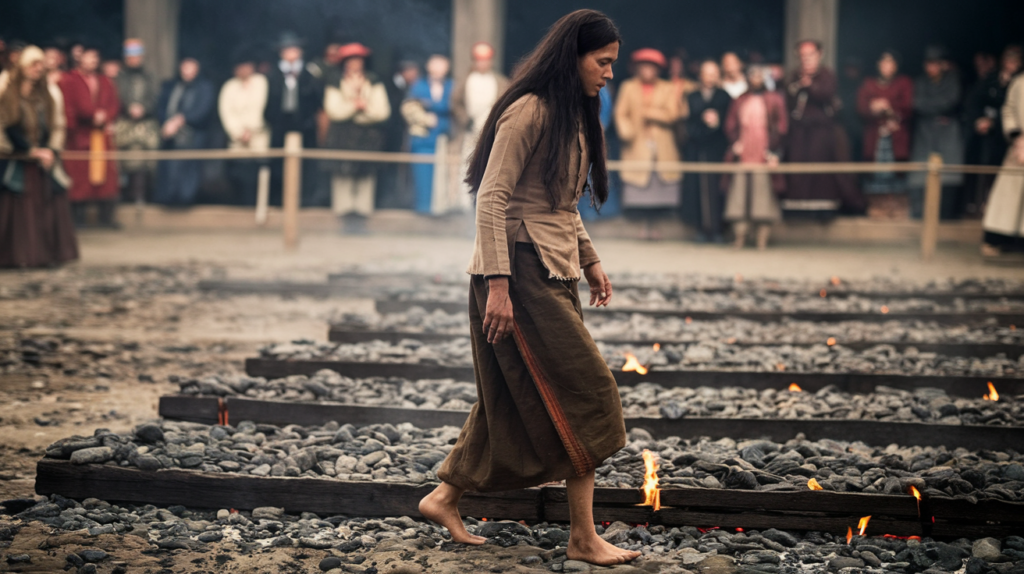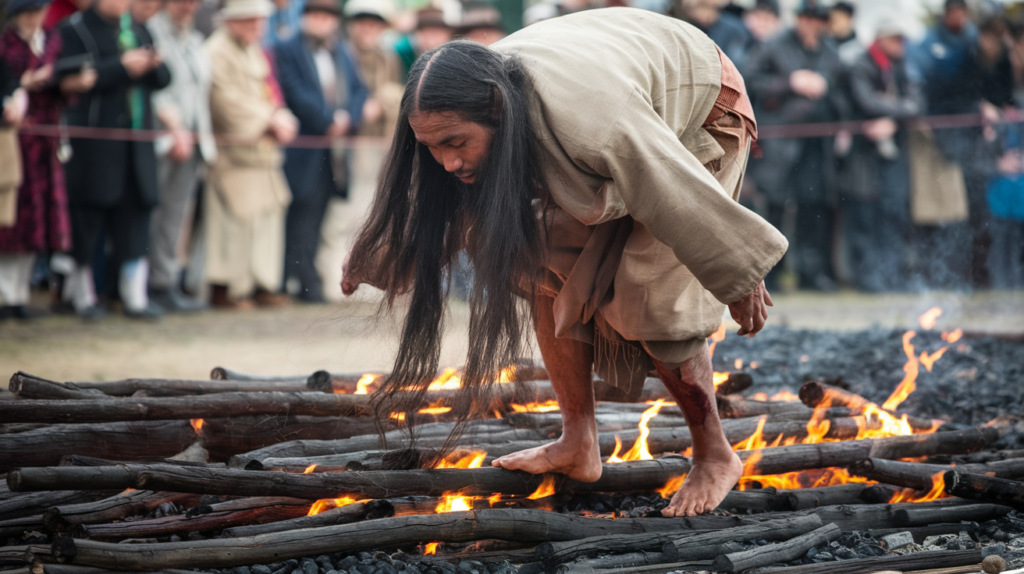Table of Contents
Hairwalk punishment is a strange and surprising practice that has been used in different cultures throughout history. This form of punishment involves making someone walk over hot coals or sharp objects while their hair is tied back. The idea behind hairwalk punishment is not just to cause pain but also to humiliate the person being punished. Hair is often seen as a symbol of identity and pride, so using it in this way can be very degrading.
In many ancient societies, hair was considered sacred and important. People believed that cutting or manipulating someone’s hair was a serious offense. Hairwalk punishment was a way to remind individuals of the rules they needed to follow. It was not just about physical pain; it was also about breaking a person’s spirit and making them feel ashamed in front of others. Understanding hairwalk punishment helps us see how different cultures have used punishment to control behavior and maintain order.
The History of Hairwalk Punishment: Where Did It Come From?
Hairwalk punishment has a long and interesting history. It has been used in various cultures around the world. In ancient times, many societies believed that hair was sacred. Cutting or manipulating someone’s hair was seen as a serious offense. This made hairwalk punishment a powerful tool for enforcing social norms.
Different cultures had their own ways of using this punishment. For example, some Indigenous peoples viewed hair as a symbol of power. Making someone walk on hot coals while their hair was pulled back was a way to publicly shame them. This practice was meant to remind everyone of the importance of following community rules.
How Hairwalk Punishment Affects the Mind and Body

The effects of hairwalk punishment can be severe. Physically, walking on hot coals or sharp objects causes pain and injury. However, the emotional impact can be even more significant. The humiliation of having one’s hair used in this way can lead to feelings of worthlessness and despair.
Many people who have experienced this punishment report lasting psychological effects. They may struggle with self-esteem and confidence. The shame associated with hairwalk punishment can linger long after the physical pain has faded. This shows how deeply such practices can affect a person’s life.
Cultural Significance of Hairwalk Punishment: Why Hair Matters
Hairwalk punishment is not just about pain; it is also about culture. In many societies, hair is a vital part of a person’s identity. It can symbolize strength, beauty, and individuality. When hair is used in punishment, it becomes a tool for humiliation and control.
- Symbol of Identity: Hair represents who we are.
- Cultural Beliefs: Different cultures have unique views on hair.
- Public Shame: Using hair in punishment is a way to embarrass someone.
Understanding the cultural significance of hair helps us see why hairwalk punishment was used. It was a way to enforce rules and maintain order in society. Today, we can learn from these practices and work towards more humane ways of addressing behavior.
The Decline of Hairwalk Punishment: A Shift in Values

Over time, hairwalk punishment has become less common. As societies change, so do their values. In the past, this form of punishment was accepted as a way to maintain order. However, modern views on human rights have led to a decline in such practices.
Today, many people believe that punishment should focus on rehabilitation rather than humiliation. This shift in thinking reflects a growing understanding of human dignity. As we learn more about the effects of punishment on individuals, we can create better systems for justice.
Moving Forward: Learning from Hairwalk Punishment for a Better Future
Reflecting on hairwalk punishment can teach us valuable lessons. It reminds us of the importance of treating everyone with respect and dignity. As we move forward, we should strive to create a world where punishment is fair and humane.
- Focus on Rehabilitation: Help people learn from their mistakes.
- Respect Human Dignity: Treat everyone with kindness and understanding.
- Learn from History: Use past practices to improve future systems.
By learning from the past, we can build a better future for everyone. Understanding hairwalk punishment helps us appreciate the importance of compassion and respect in our communities.
Lessons from Hairwalk Punishment: Understanding Human Dignity

Hairwalk punishment teaches us important lessons about human dignity. It reminds us that everyone deserves to be treated with respect, no matter their actions. When we use punishment that humiliates or degrades a person, we take away their dignity.
Understanding the impact of hairwalk punishment helps us recognize the importance of compassion. We should strive to create a society where people are held accountable for their actions without losing their sense of self-worth.
- Empathy Matters: Understanding how others feel is important.
- Promoting Kindness: Treating everyone with care and respect.
- Building Strong Communities: Supporting each other leads to better outcomes.
By learning from the past, we can create a future where dignity is valued. This will help us build stronger, more compassionate communities.
Conclusion
Hairwalk punishment is a strange and harsh practice from the past. It shows us how some cultures used pain and shame to control people. However, we have learned that everyone deserves to be treated with kindness and respect. Today, we know that punishment should help people learn and grow, not hurt them.
As we look to the future, it is important to remember the lessons from hairwalk punishment. We should always aim to create a world where everyone is treated fairly and with dignity. By being compassionate and understanding, we can build stronger communities where everyone feels valued. Let’s work together to make sure that everyone is treated with love and respect!
FAQs
Q: What is hairwalk punishment?
A: Hairwalk punishment is a form of corporal punishment where a person is made to walk over hot coals or sharp objects while their hair is tied back, causing both physical pain and humiliation.
Q: Why was hairwalk punishment used in the past?
A: It was used to enforce social norms and discipline individuals by shaming them publicly, as hair was often seen as a symbol of identity and pride in many cultures.
Q: How does hairwalk punishment affect a person mentally?
A: The punishment can lead to lasting psychological effects, including feelings of shame, low self-esteem, and a loss of dignity, which can impact a person’s mental health.
Q: Is hairwalk punishment still practiced today?
A: No, hairwalk punishment is no longer accepted in most societies today. Modern views on human rights emphasize rehabilitation and respect for individual dignity.
Q: What lessons can we learn from hairwalk punishment?
A: We can learn the importance of treating everyone with respect and compassion, and that punishment should focus on helping individuals learn from their mistakes rather than humiliating them.
Q: How has the view of punishment changed over time?
A: Over time, societies have shifted from using harsh punishments like hairwalk punishment to more humane approaches that focus on rehabilitation, education, and restoring dignity.
